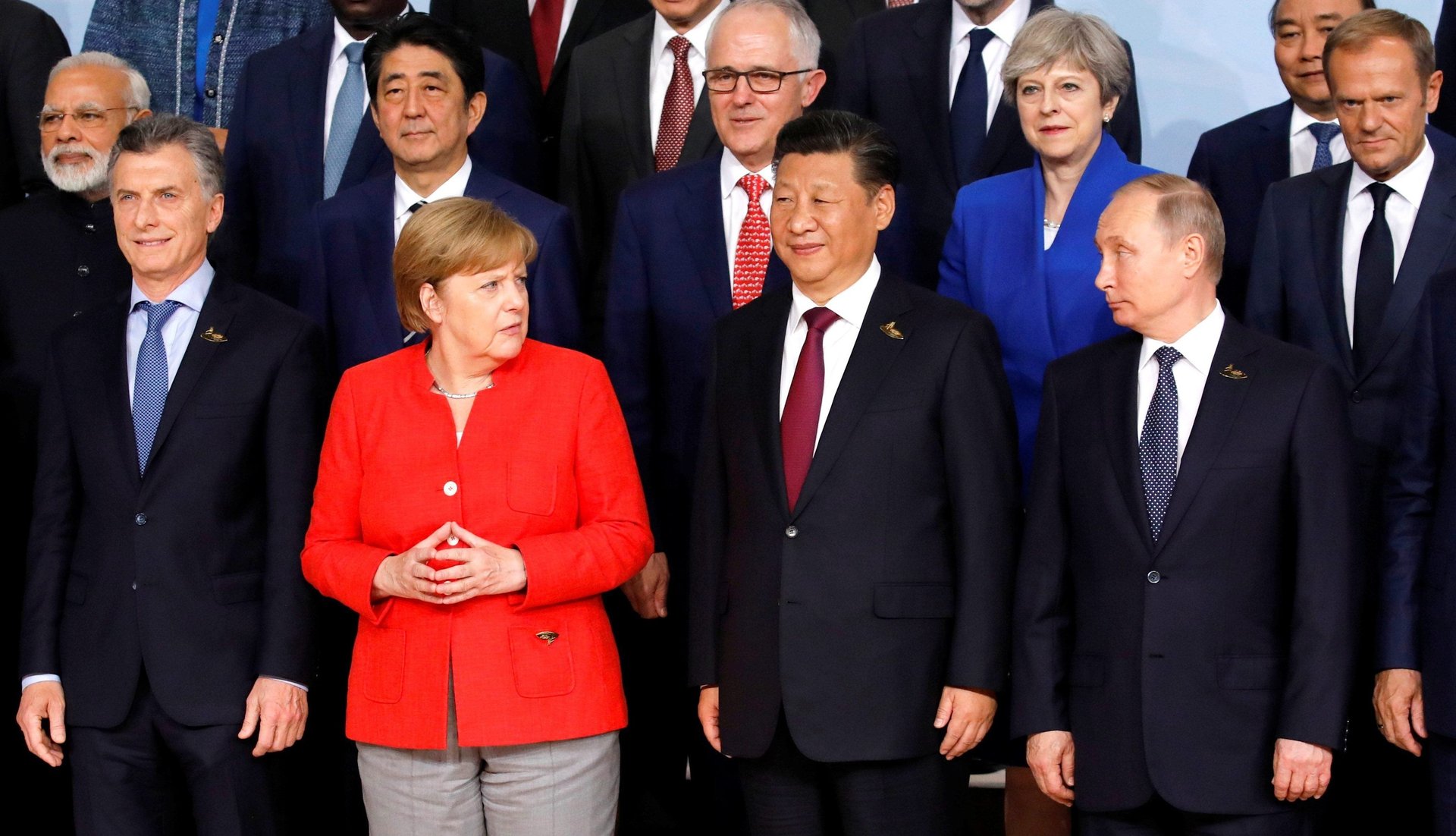Thanks to Donald Trump, the 2017 G20 summit has even more fireworks than usual
The annual meeting of the G20—the leaders of the world’s 19 wealthiest nations plus the European Union—is traditionally greeted with fierce anti-globalization protests, and this weekend’s summit in Hamburg is no exception. But thanks to the presence of US president Donald Trump, the atmosphere both inside the convention center and on the streets is likely to be even more charged than usual.


The annual meeting of the G20—the leaders of the world’s 19 wealthiest nations plus the European Union—is traditionally greeted with fierce anti-globalization protests, and this weekend’s summit in Hamburg is no exception. But thanks to the presence of US president Donald Trump, the atmosphere both inside the convention center and on the streets is likely to be even more charged than usual.
Germany has the presidency of the G20 this year, and has put on the agenda topics almost guaranteed to rile the US president, including climate change, free trade, and helping migrants and refugees. Trump has already pulled the world’s largest economy out of the group’s major climate agreement, and is expected to suggest new tariffs and trade hurdles in meetings today and tomorrow.
Anti-globalization protestors have been planning for the summit for months, and their job is made easier by the fact that Germany chose—to the dismay of Hamburg’s police—to hold it at a venue in the middle of the city, guaranteeing major disruptions. Over 100,000 protestors are expected to attend, and already dozens have been arrested, while over 150 police officers have been injured.
The violence and tension aside, the summit is still vital for global economic stability. It is the only time the leaders of the world’s top economies may be gathered in one room to discuss the economic challenges that the world is facing.
Despite the rise in nationalist and protectionist sentiment in the US, UK, and elsewhere, trade is still what powers the global economy. It accounts for just over 58% of global GDP, though that’s down from a peak of 60.9% before the 2008 financial crisis.
An expansion of the G7, the leaders of the seven richest countries, the G20 was formed after the Asian financial crisis of the late 1990s, after “it became clear that global financial issues could no longer be managed” in traditional ways, former US Treasury secretary Larry Summers and his research assistant, Matthew Schoenfeld, explained (pdf) in a 2012 article. “It is said one should visit one’s doctor before one has a serious medical problem,” they wrote. “It is in this way that the first decade of meetings of the G20 finance ministers and central bank governors will be remembered.”
The G20 members contribute 85% of global GDP. In the nearly 20 years since the group was formed, the US has remained the leader, but China has moved up the ranks, from the sixth largest economy in 2000 to the third today, behind only the US and EU.
These nations’ consumers buy the bulk of goods produced by the world’s largest companies, because they make up two-thirds of the global population and have the most spending power per capita.
Despite several years of middle-class wage stagnation, the US also still leads the world in per capita GDP, both in absolute terms and based on purchasing power parity (a measure of how much consumers can buy based on the cost of goods where they live).
This week, German chancellor Angela Merkel criticized the Trump administration’s protectionism, saying “globalization is seen by the American administration more as a process that is not about a win-win situation but about winners and losers.” There are few options but to make a success of globalization, Merkel warned earlier in a report (pdf) laying out the meeting’s priorities. “There can be no return to a pre-globalisation world.”